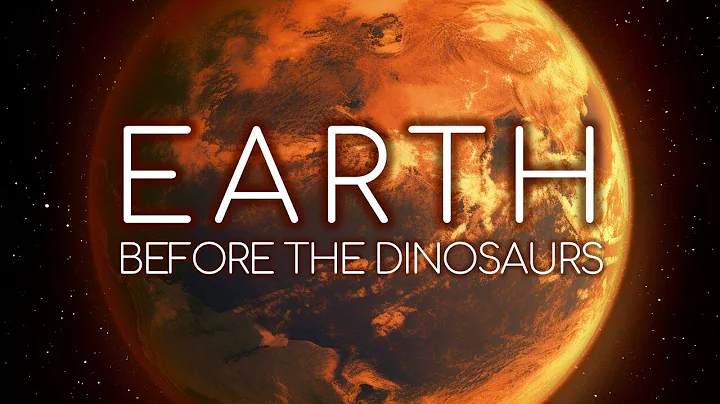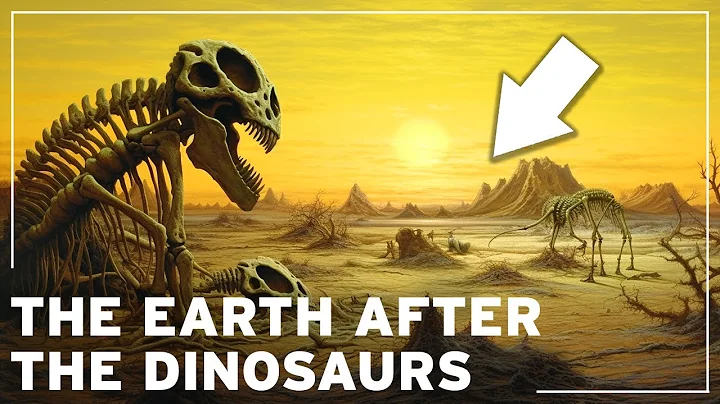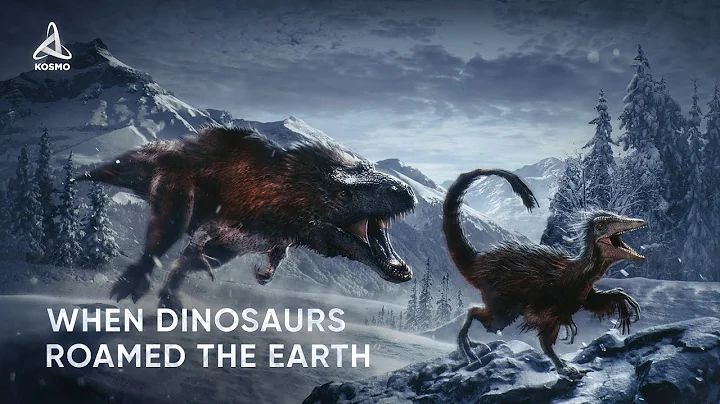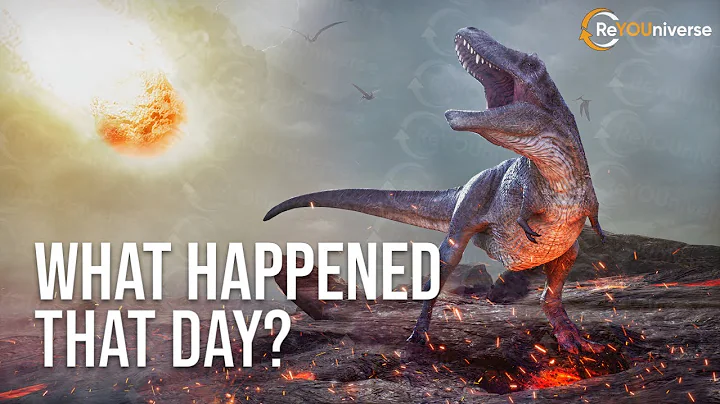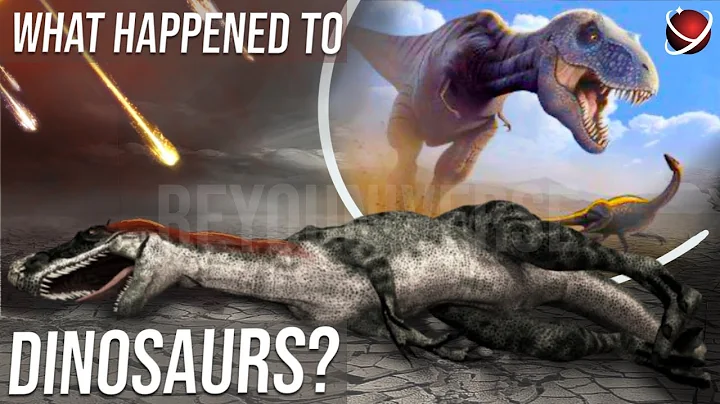A new study examines the living conditions of dinosaurs before the disaster, which may help scientists better understand the consequences of contemporary climate change.
One day 6 million years ago, the end came and life came to an abrupt end. An asteroid impact roughly closed the pages of the dinosaur age. Only birds survived this transition on the dinosaur family tree. The blank ecological niche left by the dinosaurs gave birds and our early mammalian ancestors the opportunity to stand at the center of the ecosystem.
So what if disaster didn't happen to the dinosaurs? Without the stormy waves, would they still die silently?

maybe not. Dinosaurs were dynamic until their mass extinction at the end of the Cretaceous, a new study says. The study used large-scale simulations, a new approach to paleontology, and its results shed light on the controversial question of whether the dinosaurs were already on a "path of irreversible decline" before they became extinct. The latest turning point.
Furthermore, this paper uses a landmark research approach that can help us better understand past environmental upheavals and provide more detailed details about how contemporary climate change may develop.
"The findings not only tell the full story of the decline of the dinosaurs, but also provide a counterpoint to previous studies, so they are very important. We are always designing and applying new methods, which is good. There are many sides to this thing. Paleontologists said Alfio Chiarenza, a doctoral student at Imperial College London and lead author of the study published in Nature Communications in early March.

An unfinished history of fossil evolution.
Watch Disney's 1940 film "Fantasia " to get a rough idea of how paleontologists once thought the dinosaurs became extinct. In the film, familiar species thrived in lush swamps, only to be transformed into something more sinister. The climate was defeated. This version was further developed in 1980, when Walter and Luis Alvarez discussed that it was not as simple as the dinosaurs simply walking across the desert and dying. Geological and fossil evidence combined suggested that the dinosaur dynasty was destroyed in one fell swoop. It ended with a sudden asteroid impact.
html Many years later, scientists found conclusive evidence: the remains of an impact crater off the coast of Mexico. Since then, most paleontologists have agreed that asteroids were responsible for much of the demise of the dinosaurs. Responsibility.Then again, what would have happened if the asteroid had not hit the Earth? Scientists debate this question, and it is difficult to get a clear answer because of the incompleteness of the fossil record. Only under certain conditions can they be buried and isolated from the outside world for a long enough time to form fossils. Therefore, telling the history of life from fossils is like reconstructing an epic plot from a fragment of a remaining manuscript. What to do if the paper is torn or the ink is faded?
Therefore, paleontologists must consider the sample bias of the fossil record when counting the number of ancient species. When you look at the preliminary calculation results, you will find that at the end of the Cretaceous . The total number of dinosaur species in western North America appears to have declined over 17 million years. This image shows dinosaurs becoming extinct when asteroids hit Earth.
However, the closer Maastricht phase of the mass extinction has not been unearthed. There are enough fossils to provide more detailed information. Many studies have tried to deal with this sampling bias, and their research found that dinosaur diversity in western North America remained stable or even continued to increase until the dinosaurs took their last breath. Look, things were going well for the dinosaurs, until something unexpected happened
This emerging consensus took a hit in 2016, when Sakamoto, a biologist at the University of Reading in the United Kingdom, published a paper claiming that In the tens of millions of years before the mass extinction, dinosaur species disappeared faster than new species emerged. According to this image and the global dinosaur family tree, some dinosaur families' heydays were over long before the asteroid ended.
Sakamoto's study cannot be directly compared to other studies because his study was conducted over a long time scale.However, his paper once again sparked controversy.
Big data looks at paleontology
In order to solve big problems, it is best to have a large database. Over the past few decades, paleontologists have been trying to build a massive public database to record the total number of fossils. Now, a new generation of paleontologists armed with computer skills has the ability to compartmentalize the ancient world like never before and gain new insights on a global scale.
"We are in the era of big data and information science, right?" Sakamoto said: "If you want to do this kind of macro research and propositions, you need to be based on big data, so the database is very important." "
If you imagine that database-based paleontology is like a cross between "Jurassic Park" and "The Matrix," you're dead wrong. It's a menial job that requires scrutinizing and re-checking databases with thousands of data.
"We spent years doing this thing, building failing models, executing failing tests, cleaning data day after day. If I see "Mastric" misspelled again, I'm going to go crazy "But it's worth it," says paleontologist Emma Dunne, a doctoral student at the University of Birmingham in the UK who uses climate models to study the evolutionary origins of dinosaurs. This is super interesting. "
Chiareza went through a similar process. He just wanted to study dinosaurs, but to answer his questions he had to study a variety of fields, from earth system modeling to state-of-the-art ecology .
For the new study, he first combined high-resolution models of ancient Earth's topography with the latest climate models, which scientists also use to understand human influence on today's climate. He and his colleagues then plotted the locations where dinosaur fossils were found on the ancient map, paying particular attention to three categories of dinosaurs: Tyrannosaurus rex, Ceratosaurus represented by Triceratops, and Ceratosaurus. Hadrosaur .
Researchers first used big data to train algorithms to establish connections between dinosaur groups and specific terrain and climate. With these habitat models in hand, Chiareza's team could expand their analysis to all of North America and calculate which areas would theoretically be suitable for dinosaurs. Their models suggest that much of North America should have remained habitable for dinosaurs until the end of the Cretaceous period.
Meanwhile, researchers modeled and analyzed where dinosaur fossils were most likely to have formed in the area. They modeled the flow of sediment from the nascent Rockies into sea channels that once covered the western half of North America. As the Cretaceous ended, sea channels shrank and the total amount of sediment needed to preserve fossils decreased.
Based on their results, Chiareza and his colleagues believe that dinosaur numbers declined significantly in western North America not because evolutionary mechanisms wanted to cut off the dinosaur drama, but because geologists were just too lazy.
There is probably no other creature on the planet that strikes as much fear and awe in us as the dinosaurs. The earliest dinosaurs appeared in the Triassic period about 245 million years ago, but most of them disappeared about 66 million years ago, but some dinosaur species survived.
Meteorites Changed Everything
While the debate is destined to continue, Chiareza's study joins other studies that have failed to show long-term declines in dinosaur populations. In 2018, research led by doctoral student Klara Nordén found that the teeth of plant-eating dinosaurs from the Late Cretaceous showed that ecological diversity was as rich as before.
"This is fairly consistent with what we know from other evidence," she said.
Additionally, because Chiarezza's model can simulate how dinosaurs responded to climate, his research could allow other researchers to break down what killed the dinosaurs; scientists could throw a simulated asteroid or supervolcano into the model and observe the impact on the dinosaur habitat. Chiareza is now researching the issue. Likewise, researchers can use the model to study examples of past climate change to explore how habitats will respond and what consequences ongoing climate change may have.
"This technique is extremely valuable. It could provide a basis for understanding the changes that man-made global warming may force us to face." said Paul Barrett, a paleontologist at the Natural History Museum in London, who was not involved in the effort. Study.
Steve Brussat, a paleontologist at the University of Edinburgh in the United Kingdom, added that the study clearly pointed to asteroids as the cause of the extinction of the dinosaurs. Moreover, he also pointed out that the study pointed out that if this event happened. What would have happened if the sudden disaster had not happened
“The most touching thing about this paper is that it shows very clearly that there were still rich potential ecological areas for dinosaurs to live in, but unfortunately they were not there. , because the asteroid killed them all. ” he said. “You might get a sad feeling about how dinosaurs lived. "



